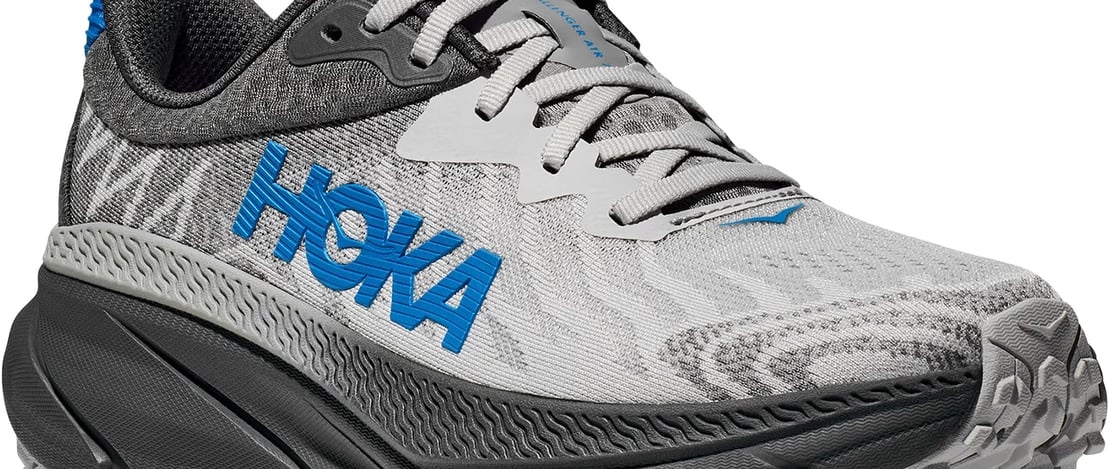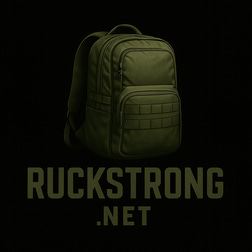Are Hoka Walking Shoes the Right Choice for Rucking?
6/23/20257 min read


Introduction to Rucking and Hoka Shoes
Rucking is a physical activity that combines walking or hiking with the added challenge of a weighted backpack. Originating from military training, rucking has gained popularity among fitness enthusiasts as a versatile and effective way to enhance strength, endurance, and cardiovascular health. This activity not only builds muscle but also encourages proper posture and promotes calorie burning due to the additional weight. As a result, many individuals are seeking the best footwear to support their rucking adventures effectively.
Hoka walking shoes have emerged as a favored choice among both walkers and runners. Known for their distinctive thick soles and extensive cushioning, Hoka shoes prioritize comfort and stability. Their advanced design reduces impact on the joints, making them an attractive option for those engaging in high-impact activities such as rucking. The brand has built a reputation for its innovative technology, which aims to provide excellent support while maintaining a lightweight feel. Thus, enthusiasts of rucking and other outdoor activities may wonder if Hoka walking shoes can meet their specific needs.
This blog post aims to explore whether Hoka shoes are indeed a suitable choice for rucking. By examining their features, benefits, and how they compare to other footwear options, potential users can make an informed decision. The assessment will cover essential aspects such as traction, stability, and overall performance during rucking, ensuring that all necessary factors are considered for a rewarding experience. Ultimately, individuals will be better equipped to ascertain the compatibility of Hoka walking shoes with their rucking pursuits.
Advantages of Hoka Shoes for Rucking
Hoka walking shoes are designed with a unique combination of features that cater specifically to rucking enthusiasts. One of the most notable advantages is their thick cushioning, which significantly reduces impact during each step. This cushioned midsole helps absorb shock, making it easier to carry weight over long distances without experiencing excessive discomfort or pain in the joints. The plush nature of Hoka shoes allows ruckers to traverse varying terrains while maintaining their stride, which is essential for both performance and endurance in rucking.
Another compelling aspect of Hoka shoes for rucking is their exceptional arch support. Proper arch support is critical for foot health, particularly when engaging in activities like rucking that demand prolonged periods on one's feet. Hoka shoes are engineered to provide support that accommodates the natural contours of the foot, reducing the risk of conditions such as plantar fasciitis. This feature not only enhances comfort during rucking but also contributes to improved overall stability, which is vital when carrying heavy loads.
In addition to cushioning and arch support, the overall comfort that Hoka walking shoes provide cannot be overstated. The shoes boast a lightweight construction, which minimizes fatigue during long treks. Their breathable materials ensure good airflow, preventing the accumulation of moisture and reducing the likelihood of blisters. This is particularly important when rucking, as heat and sweat can lead to discomfort and impede performance. Coupled with a cushioned sole and supportive structure, Hoka shoes afford ruckers a blend of comfort, stability, and protection, making them a compelling choice for this demanding activity.
Potential Drawbacks of Hoka Shoes for Rucking
While Hoka shoes are widely recognized for their comfort and cushioning, there are potential drawbacks to consider when utilizing them for rucking. One significant concern is the stability these shoes provide, particularly when carrying additional weight. The elevated midsoles that Hoka is known for can lead to an unstable feeling during uneven terrains, which may increase the risk of ankle rolls or slips. Rucking, characterized by carrying a weighted backpack over various landscapes, can place different demands on footwear and may require a more stable, structured shoe.
Moreover, the cushioning feature, while beneficial for absorbing impact, may contribute to a lack of responsiveness. Rucking often involves a mixture of fast walking and varied stride lengths, necessitating footwear that enhances ground contact and proprioception. Hoka shoes might not offer the same ground feel as other types of footwear designed specifically for rucking or hiking. The thick cushioning can diminish sensitivity to the terrain, making it challenging to adjust your posture effectively in response to changes in the ground underfoot. This could be particularly problematic for individuals who are less experienced in navigating irregular terrain while rucking.
Another aspect to consider is ankle support. Hoka shoes typically feature a lower cut, which can compromise ankle stability, especially during strenuous activities like rucking. Individuals who tackle steep inclines or descents may find that the lack of ankle support increases their vulnerability to injury. It is essential to weigh these factors against the comfort and cushioning benefits Hoka shoes provide. While they may be well-suited for certain walking activities, the specific demands of rucking may call for footwear that incorporates enhanced stability and ankle support for optimal performance and safety.
Best Hoka Models for Rucking
When considering the best Hoka walking shoes for rucking, several models stand out due to their unique features that cater specifically to the demands of this activity. Rucking requires footwear that offers substantial support, cushioning, and durability. Let’s explore some of the top Hoka options suitable for various types of ruckers.
The Hoka Bondi 7 is often recommended for rucking enthusiasts who prioritize maximum cushioning. This model features a plush midsole with an EVA foam that absorbs impact effectively, making it ideal for long rucks on hard surfaces. Its wide toe box allows for natural foot movement, reducing the risk of discomfort during extended wear. Additionally, the Bondi 7’s rubber outsole provides excellent traction, ensuring stability on varying terrains.
Another exceptional choice is the Hoka Challenger ATR 6, which finds a balance between road and trail performance. With its strategic cushioning system, this model supports dynamic movements while maintaining a lightweight feel. The rugged outsoles provide the necessary grip on uneven surfaces, making it suitable for ruckers who may encounter different terrains. It also features a breathable upper, enhancing overall comfort during prolonged use.
For ruckers focused on support and stability, the Hoka Arahi 5 is worth considering. This stability shoe includes a J-Frame technology that guides the foot naturally without adding extra weight. It is particularly beneficial for individuals who overpronate, as it helps to maintain proper alignment. The cushioning is still substantial, ensuring comfort even under heavy loads.
Ultimately, choosing the right Hoka model can significantly enhance your rucking experience, depending on your specific needs and preferences. Prioritizing elements such as cushioning, support, and terrain adaptability will help you find the perfect pair that complements your rucking style.
Tips for Using Hoka Shoes During Rucking Sessions
When engaging in rucking, selecting the right footwear is paramount, and Hoka walking shoes can provide substantial support if used correctly. One of the first considerations is choosing the right size. Hoka shoes often run true to size, but it’s advisable to try them on with the socks you plan to wear during your rucking sessions. This will ensure a comfortable fit and reduce the likelihood of blisters. Additionally, consider trying shoes at the end of the day when your feet are slightly swollen; this can help in accurately assessing size needs.
Stability plays a crucial role in effective rucking. Hoka shoes are designed with a wide base, enhancing stability, but adding insoles can further improve support, especially if you have specific foot requirements. Strengthening your ankles through exercises prior to rucking can also enhance stability and reduce injury risk, making Hoka a viable option for those looking to combine fashion with function.
Next, the loading of your backpack should be considered. Placing heavier items close to your back helps maintain an optimal center of gravity, which in turn reduces strain on your feet. Proper posture is essential while rucking; always focus on keeping your shoulders back, your head up, and your core engaged. This form not only alleviates pressure on the lower back but also amplifies the performance benefits of your Hoka shoes. Adjusting your gait by taking shorter, deliberate steps can further enhance stability and comfort throughout your rucking journey.
By carefully selecting the right size, enhancing stability, and employing proper hiking techniques, you can maximize your performance while wearing Hoka shoes during your rucking sessions. Engaging in these practices will contribute significantly towards an effective and enjoyable rucking experience.
Personal Experiences and Testimonials
Many ruckers have shared their experiences with Hoka walking shoes, providing valuable insights into their performance during rucking activities. One satisfied user, a seasoned rucker, reported a significant improvement in comfort and stability when switching to Hoka shoes. They emphasized that the cushioning offered by the shoes reduced fatigue during long-distance rucks, allowing them to maintain a brisk pace even when carrying a heavy load. The lightweight nature of Hoka's offerings also contributed to their enjoyment, as they felt less burdened compared to traditional rucking footwear.
Another user highlighted the breathability of Hoka shoes, which is particularly beneficial during warmer weather. While rucking can be strenuous, they found that their feet remained less sweaty and were better supported throughout the trek. This feature is crucial for ruckers who frequently embark on extensive hikes or workouts, as moisture accumulation can lead to discomfort. Additionally, the traction provided by Hoka's shoe designs impressed many users, as they felt secure navigating various terrains, from rocky paths to muddy trails.
Testimonials from users also point to the longevity of Hoka walking shoes. Even after several months of rigorous use, many found that these shoes maintained their structural integrity better than other brands they had tried in the past. This durability means fewer replacements and lower costs in the long run, an important factor for committed ruckers. Furthermore, a community dedicated to fitness and exploration has emerged around Hoka walking shoes. Many ruckers actively exchange advice and anecdotes, fostering a sense of camaraderie while ensuring that newcomers find the right footwear for their rucking adventures. The positive feedback surrounding Hoka shoes largely aligns with their reputation for quality and performance, particularly in the demanding context of rucking.
Conclusion: Are Hoka Shoes Right for You?
As we explore the suitability of Hoka walking shoes for rucking, it's essential to summarize the critical aspects addressed throughout this blog post. Hoka shoes are designed with specific features that could be beneficial for ruckers, particularly their cushioning and support systems. The maximalist cushioning can help absorb impact, which is a considerable advantage for those carrying weights during rucking sessions. However, potential users should also consider their level of rucking frequency, the terrain they typically navigate, and their personal comfort preferences.
For individuals who engage in rucking frequently, the choice of footwear is paramount. Hoka shoes can provide the necessary durability and comfort for extended periods; however, some users may prefer a more minimalist design for better ground feedback, particularly on varied terrains. In cases where the rucking routes involve uneven or challenging landscapes, it is critical to evaluate the traction and stability offered by these shoes. While many find Hoka's wide base comforting, others might appreciate a more streamlined option that promotes agility and responsiveness.
Ultimately, determining whether Hoka walking shoes are the right choice for rucking comes down to personal preference and specific use cases. Each individual may have different needs based on their body mechanics and rucking style. Therefore, it is advisable to try on various models and take them for a test run before deciding. By considering your rucking habits, the environments where you train, and the attributes of Hoka shoes, you can make a well-informed decision that enhances your rucking experience.
